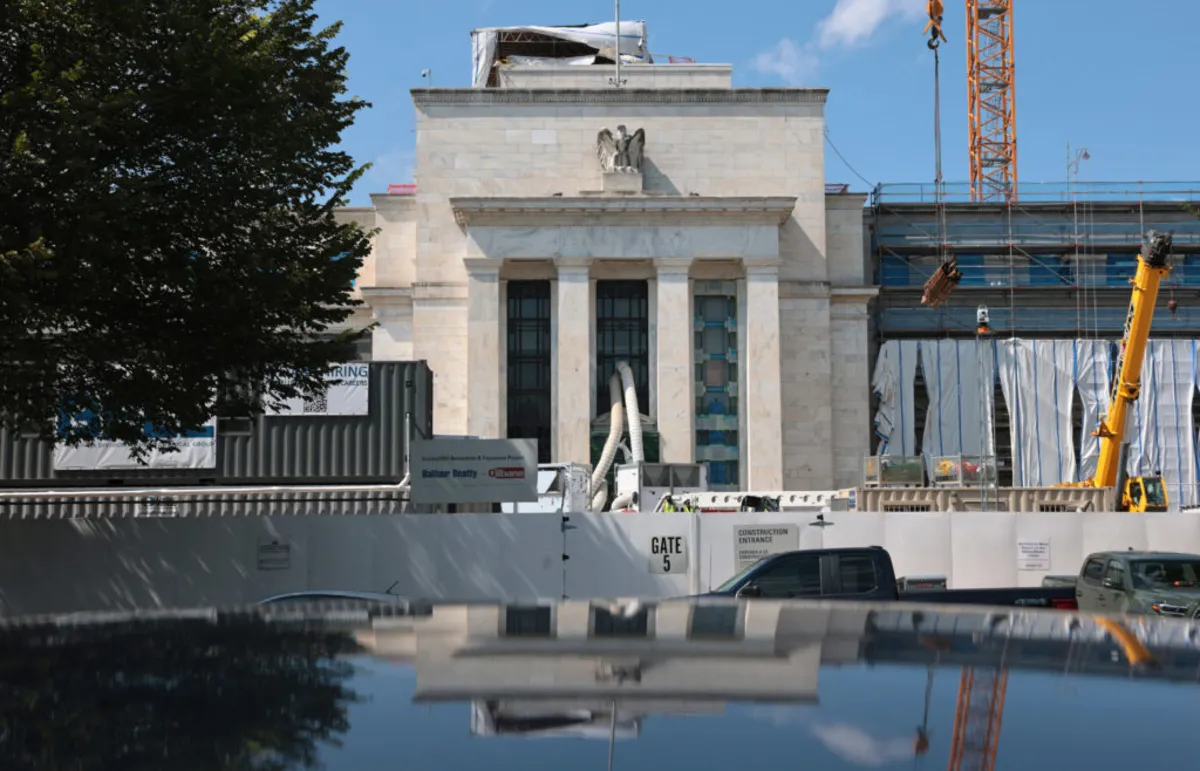
In a surprising twist, President Donald Trump has cited the lavish marble finishes and hefty price tag of the Federal Reserve headquarters as justification for potentially firing Chair Jerome Powell. The two have had a tumultuous relationship over interest rates, but the extensive use of marble in the Fed's renovation is partly a result of policies endorsed by Trump himself. During Trump’s first term, plans for the renovation of the Great Depression-era headquarters faced scrutiny, particularly from Trump appointees who advocated for more “white Georgia marble” in the building's design.
As the Federal Reserve proceeded with its renovation plans, there were significant concerns raised in 2020 during a vetting process involving Trump-appointed officials. These officials insisted that marble better reflected the historic character of the building, despite the Fed's architects advocating for glass walls to promote transparency. The minutes from the Commission of Fine Arts indicate that the marble was added in response to these pressures, complicating the White House's narrative of portraying the central banker as a reckless spender.
Despite the marble's aesthetic appeal, it does not account for the staggering $600 million in cost overruns for the Fed headquarters and an adjacent office building, which is projected to cost $2.5 billion. This budget includes the construction of an underground parking garage and new glass atria in the building’s courtyards. According to Alex Krieger, an emeritus professor at Harvard University and a former commission member, the extensive use of marble could further inflate these costs.
Recently, Russ Vought, Trump’s chief budget adviser, highlighted “premium marble” in a letter to Powell, labeling it as evidence of an “ostentatious overhaul.” In a response, Powell defended the project, stating that the renovation would feature “new domestic marble” to address concerns raised by external review agencies. The National Capital Planning Commission, which also evaluated the renovation project, has initiated an inquiry into Powell’s oversight of the updates.
White House spokesman Kush Desai criticized the Federal Reserve's multi-billion dollar renovation, stating that the Fed's leadership must take responsibility for the apparent mismanagement of taxpayer dollars. A spokesperson for the Fed declined to comment on these allegations, emphasizing the gravity of the situation where the future of the U.S. central bank may hinge on architectural disputes and renovation costs.
The ongoing conflict could have severe repercussions for the U.S. economy, as financial markets expect the Fed to operate independently of White House influence. Trump has suggested he would only consider firing Powell if he believed there was “fraud” involved. Such an action could create a perception that the central bank is serving Trump’s political interests, potentially leading to increased interest rates on U.S. debt and mortgages, contrary to the administration's promises.
The 115-year-old Commission of Fine Arts reviewed the renovation plans multiple times in 2020. During a meeting in January, Duncan Stroik, a Trump appointee, proposed an amendment to include an alternative design using white Georgia marble, similar to other historic buildings along Constitution Avenue. While this amendment was ultimately rejected, the commission continued to express concerns about the Fed’s designs, which they considered too reminiscent of commercial architecture.
By July 2020, the Fed's architects presented a revised proposal featuring panels of white Georgia marble for the building’s base and cornice, aligning with the historic aesthetic. However, experts like Stroik argued that stone buildings do not inherently have to be exorbitantly priced, suggesting that cost comparisons were never adequately explored during the commission's discussions.
The fate of the Federal Reserve and its leadership may soon become entangled in a complex legal battle regarding the extent of Trump's authority to dismiss a Fed chair he disagrees with. As discussions around the Fed's renovation continue to unfold, the implications for U.S. monetary policy and the central bank's independence remain significant. With Powell's term set to conclude in May 2026, the coming months will be critical in determining both his future and the broader financial landscape.